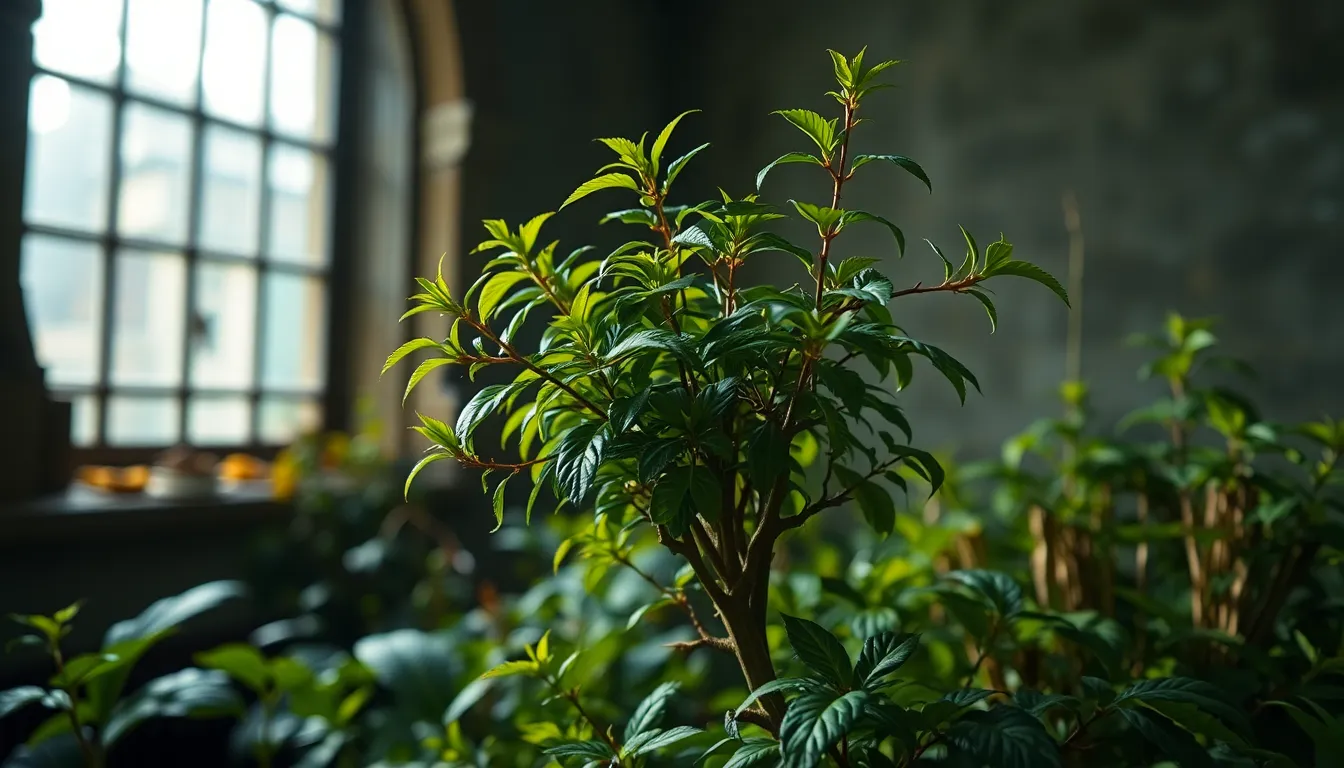The Myth of the Dying Plant: Why Your Greenery Might Be Just Fine
Introduction: Understanding Plant Anxiety
Many plant owners experience a sense of anxiety regarding the health of their green companions. The fear of plant death can be overwhelming, leading to constant monitoring and second-guessing of care routines. This article aims to debunk the myths surrounding plant care, providing a clearer understanding of what constitutes a healthy plant and the various signs that may indicate stress rather than imminent demise.
Common Misconceptions About Plant Health
One of the most prevalent misconceptions among plant owners is that certain symptoms always signify a dying plant. For instance, many believe that yellow leaves are an unequivocal sign of a plant’s demise. However, this is not always the case.
- Yellow Leaves: This could indicate overwatering, nutrient deficiency, or natural aging, rather than death.
- Leaf Drop: While dropping leaves can be concerning, it might also be a response to environmental stress or seasonal changes.
- Wilting: Wilting plants often simply need water, not immediate panic.
Understanding the difference between signs of stress and signs of dying is crucial for any plant caregiver.
The Resilience of Plants: Nature’s Survivors
Plants are remarkably resilient organisms that have evolved a variety of adaptive strategies to survive adverse conditions. Many species can endure drought, extreme temperatures, and poor soil quality. Here are some examples of plants that thrive under tough conditions:
- Cacti: Adapted to arid environments, cacti store water and can survive long periods without rainfall.
- Succulents: Similar to cacti, succulents can go without water for extended periods by storing moisture in their leaves.
- Weeds: Often viewed as nuisances, many weeds are incredibly hardy and can thrive in poor soil and neglect.
These examples demonstrate that many plants are equipped to handle stress and can often bounce back with the right care.
Signs of Stress vs. Signs of Death
It’s essential to differentiate between various physical signs to accurately assess plant health. Here are some common signs:
- Leaf Discoloration: Yellowing or browning leaves can indicate various issues including nutrient deficiency or improper watering.
- Wilting: This can indicate a lack of water, but it may also result from overwatering, leading to root rot.
- Stunted Growth: If a plant isn’t growing, it may not be dead but rather under stress from inadequate light or nutrients.
By correctly interpreting these signs, plant owners can make informed decisions about their care routines.
Understanding Plant Needs: Light, Water, and Soil
Every plant species has specific needs regarding light, water, and soil composition. Understanding these requirements is critical for ensuring a healthy plant environment:
- Light: Ensure your plant receives the right amount of sunlight. Too much direct sunlight can scorch leaves, while too little can stunt growth.
- Water: Overwatering is a common mistake. Always check the soil moisture before watering to avoid root rot.
- Soil: The correct soil type is essential for drainage and nutrient retention. Research the best soil for your specific plant species.
By meeting these needs, you can create a stable environment that minimizes stress in your plants.
The Role of Environmental Factors
Environmental factors play a significant role in plant health. Changes in temperature, humidity, and light conditions can affect how a plant behaves:
- Temperature: Extreme temperatures can cause stress. Most houseplants thrive in temperatures between 65°F and 75°F (18°C to 24°C).
- Humidity: Many plants, especially tropical varieties, prefer high humidity. If the air is too dry, consider using a humidifier or pebble tray.
- Seasonal Adjustments: As seasons change, so do plant needs. In winter, some plants may go dormant and require less water and light.
Being aware of these factors can help you adapt your care routine accordingly.
The Importance of Patience in Plant Care
Patience is vital when caring for plants. Recovery from stress can take time, and many plants will show signs of improvement gradually. Consider the following case studies:
- Snake Plant: Often neglected, snake plants can thrive even when watered infrequently. They may appear limp but often bounce back after a good watering.
- Pothos: This hardy plant may drop leaves when moved to a new environment but will often recover once acclimatized.
Understanding that plants can take time to respond to care changes can alleviate stress for plant owners.
Common Plant Care Mistakes and Their Solutions
Plant care mistakes are common, but learning from them is part of the journey:
- Overwatering: Solution: Always check soil moisture before watering. Allow the top inch of soil to dry out.
- Poor Lighting: Solution: Research your plant’s light requirements and adjust its location as needed.
- Ignoring Pest Issues: Solution: Regularly inspect plants for pests and treat promptly to prevent infestations.
By identifying and correcting these mistakes, you can improve your plant care approach without unnecessary panic.
When to Seek Professional Help
Sometimes, despite your best efforts, you may need to seek professional help. Look for these signs:
- Pests: If you notice pests that you cannot manage, consult a professional.
- Diseases: Signs of disease, such as unusual spots or mold, may require expert intervention.
- Persistent Stress: If your plant continues to decline despite your care, consider seeking advice.
Resources for professional help can include local garden centers, plant shops, and online plant care services.
Conclusion: Embracing the Journey of Plant Parenthood
Plant care is a journey filled with learning opportunities and moments of joy. Embrace the process, understanding that plants are resilient and can often recover from stress. By cultivating patience and a deeper understanding of plant needs, you can foster a thriving green environment in your home. Remember, your greenery might be just fine, and with the right care, it can flourish beautifully.




